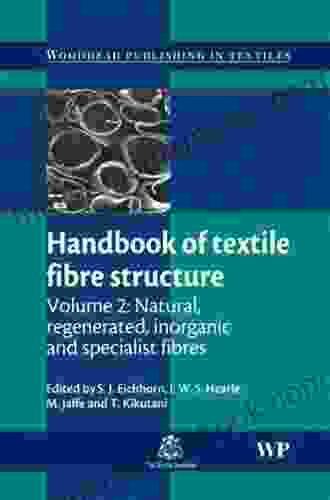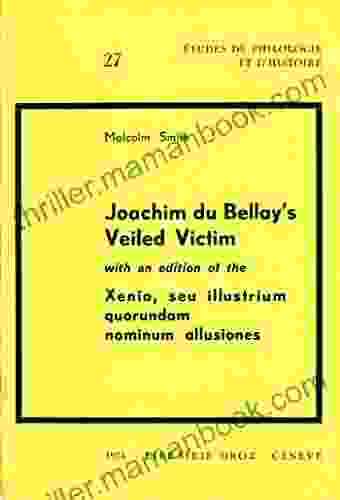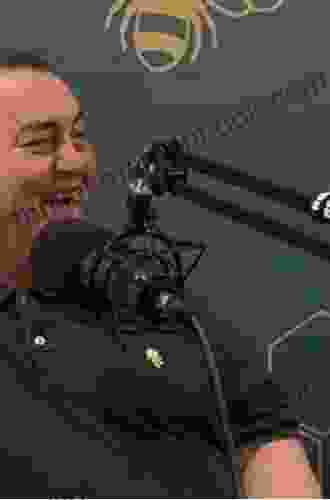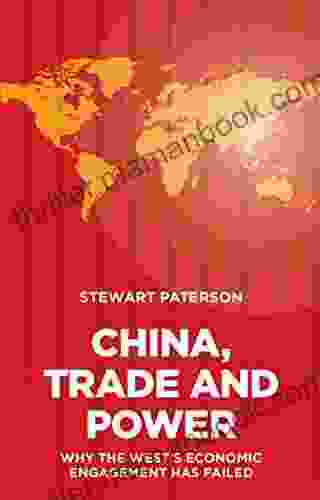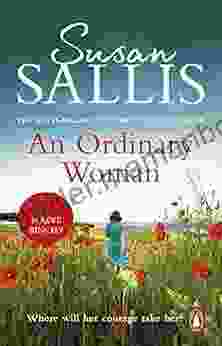Handbook of Textile Fibre Structure

Fibres are the basic building blocks of textiles. They are long, thin, flexible structures that can be spun into yarn and woven or knitted into fabric. Fibres can be natural, such as cotton, wool, and silk, or synthetic, such as nylon, polyester, and spandex.
The structure of a fibre determines its properties, such as strength, elasticity, and moisture absorbency. These properties, in turn, determine the applications for which a fibre is best suited. For example, strong, elastic fibres are used in clothing that needs to be durable and stretchy, such as sportswear and swimwear. Moisture-absorbent fibres are used in clothing that needs to wick away sweat, such as activewear and underwear.
The Handbook of Textile Fibre Structure is a comprehensive guide to the structure, properties, and applications of natural and synthetic fibres. This book provides a detailed overview of the different types of fibres, their chemical composition, physical properties, and how they are used in various textile applications.
4 out of 5
| Language | : | English |
| File size | : | 20892 KB |
| Text-to-Speech | : | Enabled |
| Enhanced typesetting | : | Enabled |
| Print length | : | 536 pages |
| Screen Reader | : | Supported |
Natural fibres are fibres that are derived from plants or animals. The most common natural fibres are cotton, wool, silk, and linen.
- Cotton is a plant fibre that is made from the seed hairs of the cotton plant. Cotton is a soft, absorbent fibre that is used in a wide variety of textile applications, including clothing, bedding, and home furnishings.
- Wool is an animal fibre that is made from the fleece of sheep, goats, and other animals. Wool is a warm, durable fibre that is used in clothing, blankets, and other warm weather gear.
- Silk is an animal fibre that is made from the cocoons of silkworms. Silk is a strong, lustrous fibre that is used in clothing, bedding, and other luxury items.
- Linen is a plant fibre that is made from the stems of the flax plant. Linen is a strong, durable fibre that is used in clothing, bedding, and table linens.
Synthetic fibres are fibres that are made from man-made materials. The most common synthetic fibres are nylon, polyester, and spandex.
- Nylon is a synthetic fibre that is made from polyamide polymers. Nylon is a strong, elastic fibre that is used in clothing, carpets, and other durable applications.
- Polyester is a synthetic fibre that is made from polyethylene terephthalate (PET) polymers. Polyester is a strong, wrinkle-resistant fibre that is used in clothing, bedding, and other home furnishings.
- Spandex is a synthetic fibre that is made from polyurethane polymers. Spandex is a very elastic fibre that is used in clothing, swimwear, and other applications where stretch is required.
The properties of a fibre are determined by its structure. The most important fibre properties are strength, elasticity, moisture absorbency, and durability.
- Strength is a measure of how much force a fibre can withstand before breaking. Strong fibres are used in applications where durability is important, such as clothing, carpets, and ropes.
- Elasticity is a measure of how much a fibre can stretch before it breaks. Elastic fibres are used in applications where stretch is required, such as clothing, swimwear, and bandages.
- Moisture absorbency is a measure of how much water a fibre can absorb. Moisture-absorbent fibres are used in applications where wicking away sweat is important, such as activewear and underwear.
- Durability is a measure of how well a fibre can withstand wear and tear. Durable fibres are used in applications where longevity is important, such as clothing, carpets, and upholstery.
Fibres are used in a wide variety of textile applications, including clothing, bedding, home furnishings, and industrial products. The type of fibre used in a particular application is determined by the desired properties of the final product.
- Clothing is made from a variety of fibres, including cotton, wool, silk, nylon, polyester, and spandex. The type of fibre used in a particular garment is determined by the desired properties of the garment, such as comfort, durability, and wrinkle resistance.
- Bedding is made from a variety of fibres, including cotton, wool, silk, and synthetic fibres. The type of fibre used in a particular bedding product is determined by the desired properties of the product, such as warmth, comfort, and absorbency.
- Home furnishings are made from a variety of fibres, including cotton, wool, silk, nylon, polyester, and spandex. The type of fibre used in a particular home furnishing product is determined by the desired properties of the product, such as durability, comfort
4 out of 5
| Language | : | English |
| File size | : | 20892 KB |
| Text-to-Speech | : | Enabled |
| Enhanced typesetting | : | Enabled |
| Print length | : | 536 pages |
| Screen Reader | : | Supported |
Do you want to contribute by writing guest posts on this blog?
Please contact us and send us a resume of previous articles that you have written.
 Top Book
Top Book Novel
Novel Fiction
Fiction Nonfiction
Nonfiction Literature
Literature Paperback
Paperback Hardcover
Hardcover E-book
E-book Audiobook
Audiobook Bestseller
Bestseller Classic
Classic Mystery
Mystery Thriller
Thriller Romance
Romance Fantasy
Fantasy Science Fiction
Science Fiction Biography
Biography Memoir
Memoir Autobiography
Autobiography Poetry
Poetry Drama
Drama Historical Fiction
Historical Fiction Self-help
Self-help Young Adult
Young Adult Childrens Books
Childrens Books Graphic Novel
Graphic Novel Anthology
Anthology Series
Series Encyclopedia
Encyclopedia Reference
Reference Guidebook
Guidebook Textbook
Textbook Workbook
Workbook Journal
Journal Diary
Diary Manuscript
Manuscript Folio
Folio Pulp Fiction
Pulp Fiction Short Stories
Short Stories Fairy Tales
Fairy Tales Fables
Fables Mythology
Mythology Philosophy
Philosophy Religion
Religion Spirituality
Spirituality Essays
Essays Critique
Critique Commentary
Commentary Glossary
Glossary Bibliography
Bibliography Index
Index Table of Contents
Table of Contents Preface
Preface Introduction
Introduction Foreword
Foreword Afterword
Afterword Appendices
Appendices Annotations
Annotations Footnotes
Footnotes Epilogue
Epilogue Prologue
Prologue Lara Smithe
Lara Smithe Michel Houellebecq
Michel Houellebecq Carmen Boullosa
Carmen Boullosa Don Hossler
Don Hossler B K Brain
B K Brain Steven Torriano Berry
Steven Torriano Berry Bertolt Brecht
Bertolt Brecht Neetha Naidu
Neetha Naidu Gregory J Cizek
Gregory J Cizek Sharan A Gibson
Sharan A Gibson Michael Arkush
Michael Arkush Harley Ford Hodges
Harley Ford Hodges Nicholas Denmon
Nicholas Denmon Susan Sallis
Susan Sallis Thomas Barta
Thomas Barta Travis Lett
Travis Lett R C Majumdar
R C Majumdar Jamal Abukou
Jamal Abukou Camille Fournier
Camille Fournier Jeff Lindsay
Jeff Lindsay
Light bulbAdvertise smarter! Our strategic ad space ensures maximum exposure. Reserve your spot today!
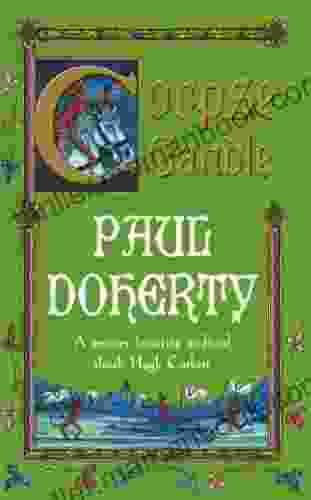
 Ronald SimmonsUnveiling the Secrets of Corpse Candle: A Deeper Dive into Hugh Corbett's...
Ronald SimmonsUnveiling the Secrets of Corpse Candle: A Deeper Dive into Hugh Corbett's... Ethan MitchellFollow ·9.7k
Ethan MitchellFollow ·9.7k Sidney CoxFollow ·3k
Sidney CoxFollow ·3k Julio Ramón RibeyroFollow ·17.1k
Julio Ramón RibeyroFollow ·17.1k Stuart BlairFollow ·13.1k
Stuart BlairFollow ·13.1k Darren NelsonFollow ·2.3k
Darren NelsonFollow ·2.3k Wade CoxFollow ·18.7k
Wade CoxFollow ·18.7k Stan WardFollow ·17.2k
Stan WardFollow ·17.2k Houston PowellFollow ·15.5k
Houston PowellFollow ·15.5k
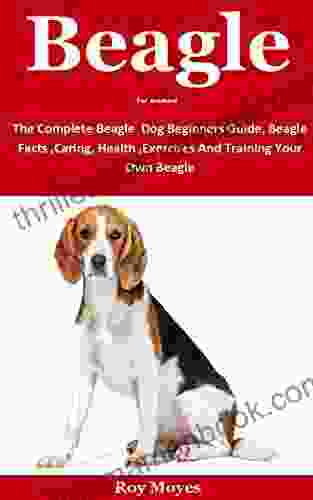
 Caleb Carter
Caleb CarterThe Complete Beagle Dog Beginners Guide: Beagle Facts,...
Beagles are...
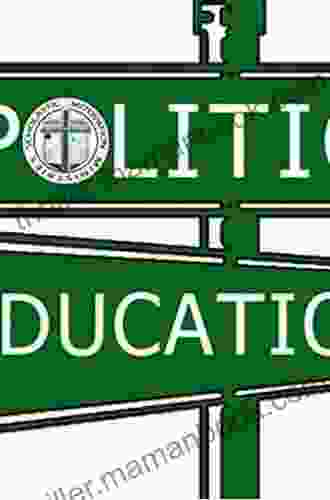
 Gage Hayes
Gage HayesThe Origins and Evolution of No Child Left Behind:...
The No Child Left Behind...
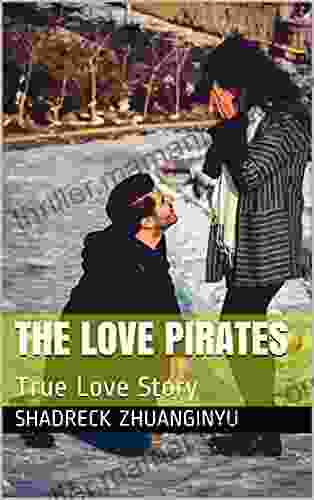
 George Martin
George MartinThe Love Pirates: A Swashbuckling Tale of Love,...
The Love Pirates is a thrilling...
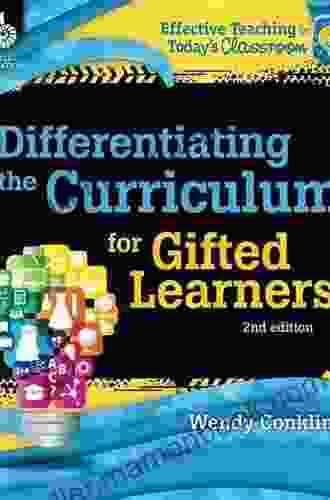
 Nathaniel Hawthorne
Nathaniel HawthorneDifferentiating the Curriculum for Gifted Learners:...
Gifted learners are...
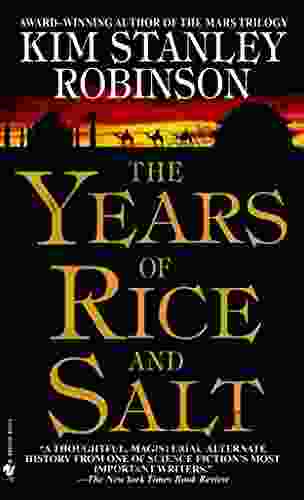
 Carlos Fuentes
Carlos FuentesThe Years of Rice and Salt: A Journey Through a Forgotten...
The Years of Rice and Salt is...
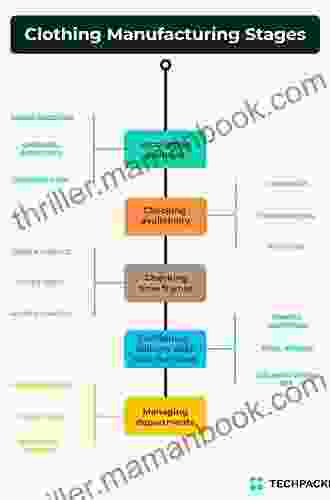
 Herbert Cox
Herbert CoxThe Intricate Design of Clothing Manufacturing Processes:...
The clothing industry is a vast and...
4 out of 5
| Language | : | English |
| File size | : | 20892 KB |
| Text-to-Speech | : | Enabled |
| Enhanced typesetting | : | Enabled |
| Print length | : | 536 pages |
| Screen Reader | : | Supported |


